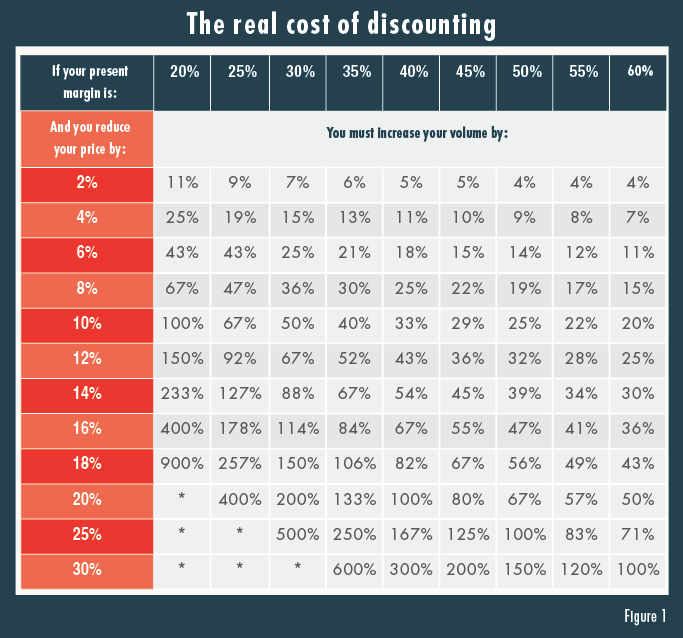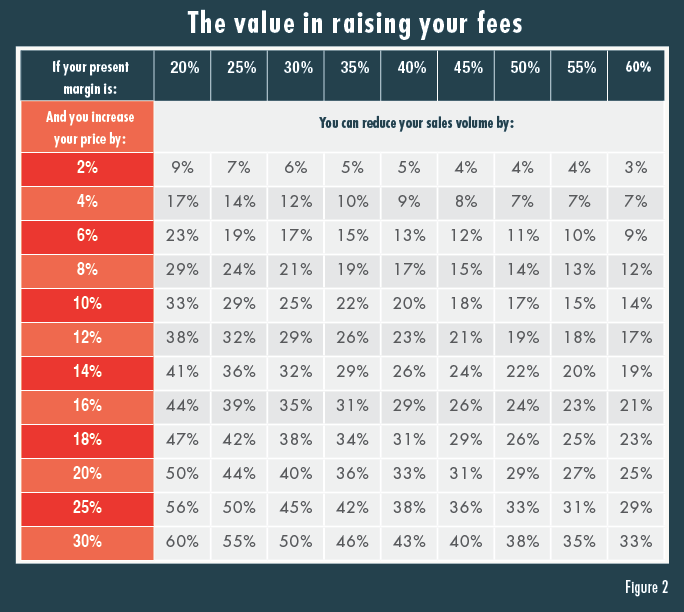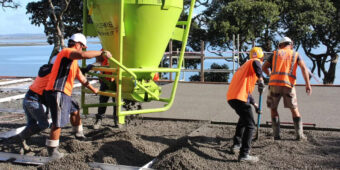Does dropping your price stack up?
12 Jun 2014, Business Tips, Featured, Prove Your Know How

Wondering whether you’re charging the right amount for your work? Crowe Horwath explains how changes in pricing influence your profitability.
Should I be reducing my rates to win the job? Can I afford to charge ‘mates rates’? Can I undercut my competitors to win more work? Will this be sustainable long term or just attract one-off customers?
These are all questions asked, and strategies frequently employed, by New Zealand businesses operating in an increasingly competitive marketplace. But the implications of these strategies can be very damaging for the profitability of the business.
Compensating your discounts
 Figure 1 indicates the increase in work that is required to compensate for reducing your rates.
Figure 1 indicates the increase in work that is required to compensate for reducing your rates.
For example, if your gross margin (income less direct costs, such as wages, subcontractor payments and materials) is 30% and you reduce your price by 10%, you need to increase workload by 50% to maintain your initial profit.
In the increasingly competitive construction market, the efficiencies required to produce such an increase in work are very difficult and can often be the ruin of businesses.
Rarely has such a strategy worked in the past and it’s unlikely that it will work in the future. The true issue with lowering your prices is the devastating effect it can have on businesses, which may not be immediately apparent.
Often you may reduce your rates to win a substantial job, and your initial figures show that you will still make a profit on the work; however, if any additional costs are incurred, the job you thought had the potential to make your business a healthy profit could easily turn into a loss. If further jobs are needed quickly to bring in more income, a knee-jerk reaction may lead to additional price reductions and the cycle continues.
If you are following a discounting strategy, it is important to have completed the projections and understand the financial implications before proceeding.
Price increase
On the other hand, Figure 2 shows the amount by which your work would have to decline following a price increase, before your gross profit is reduced below its previous level.
At a 30% margin and a 10% increase in price, you could sustain a 25% reduction in workload before your profit is reduced to the previous level… you would have to lose 1 out of every 4 customers!
However, it’s not as simple as raising prices to increase your profit. If it was, we would live in a never-ending world of price increases! Other information will be required before you settle on a pricing strategy, and if a price increase is too significant, you will lose customers.
As with reducing your rates, you need to understand the implications of all decisions that the business makes in regard to price increases.
What is most important, in our opinion, is that you have a clear pricing strategy. Understanding the competition and their prices, plus clearly documenting what you can offer to your customers in terms of value, are part of the decision-making process.
If possible, being able to test price points in a controlled environment can offer incredibly valuable information for market pricing. It’s a complex and fascinating area that is often overlooked to the detriment of profitability, cashflow and growth.
Conversely, planning for optimum pricing can drive profitability and growth for your business.
If you would like to discuss implementing this into your business planning, contact Peter van der Heijden at peter.vdh@crowehorwath.co.nz or contact your local Crowe Horwath advisor.
For the contact details of your local office, please visit: www.crowehorwath.co.nz/locations or phone 0800 494 569.
Register to earn LBP Points Sign in




